|
|
Post by fernwood on Feb 12, 2023 5:23:05 GMT -5
|
|
|
|
Post by vegasjames on Feb 13, 2023 9:30:21 GMT -5
|
|
|
|
Post by vegasjames on Feb 13, 2023 10:33:03 GMT -5
Some stuff I dug out of a mine here in Southern Nevada a few years ago. Unfortunately, this mine and another mine I used to find turquoise at have been taken over by gun ranges. This is naturally hard and none of this has been stabilized and does not need to be. 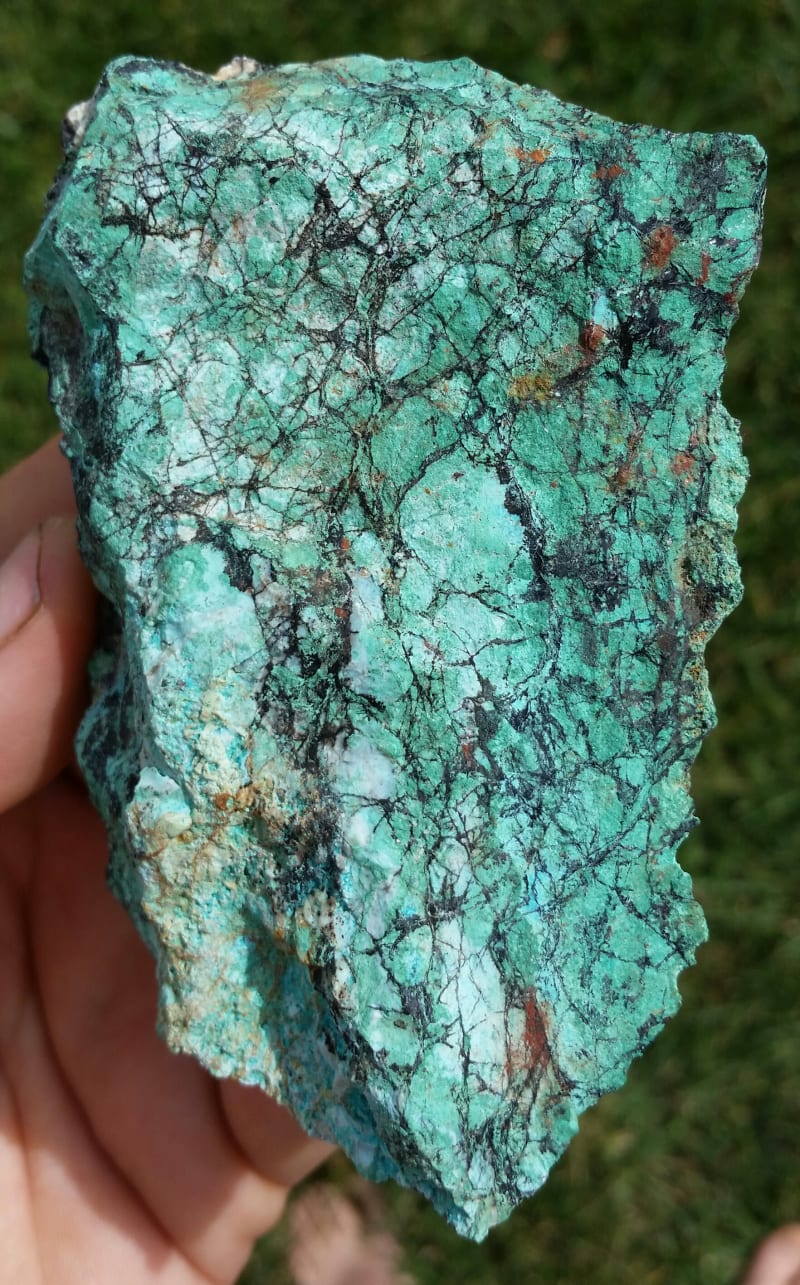 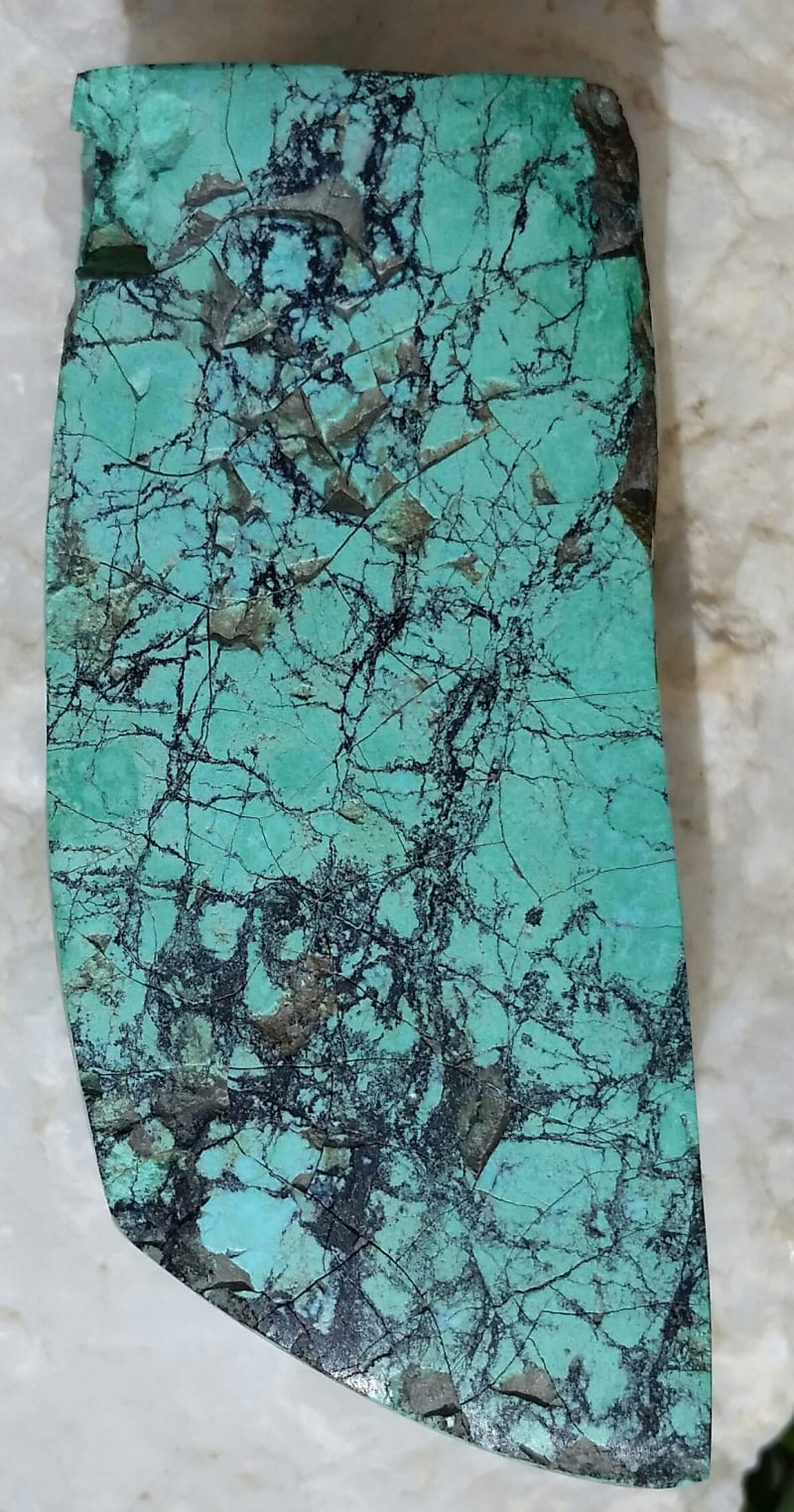 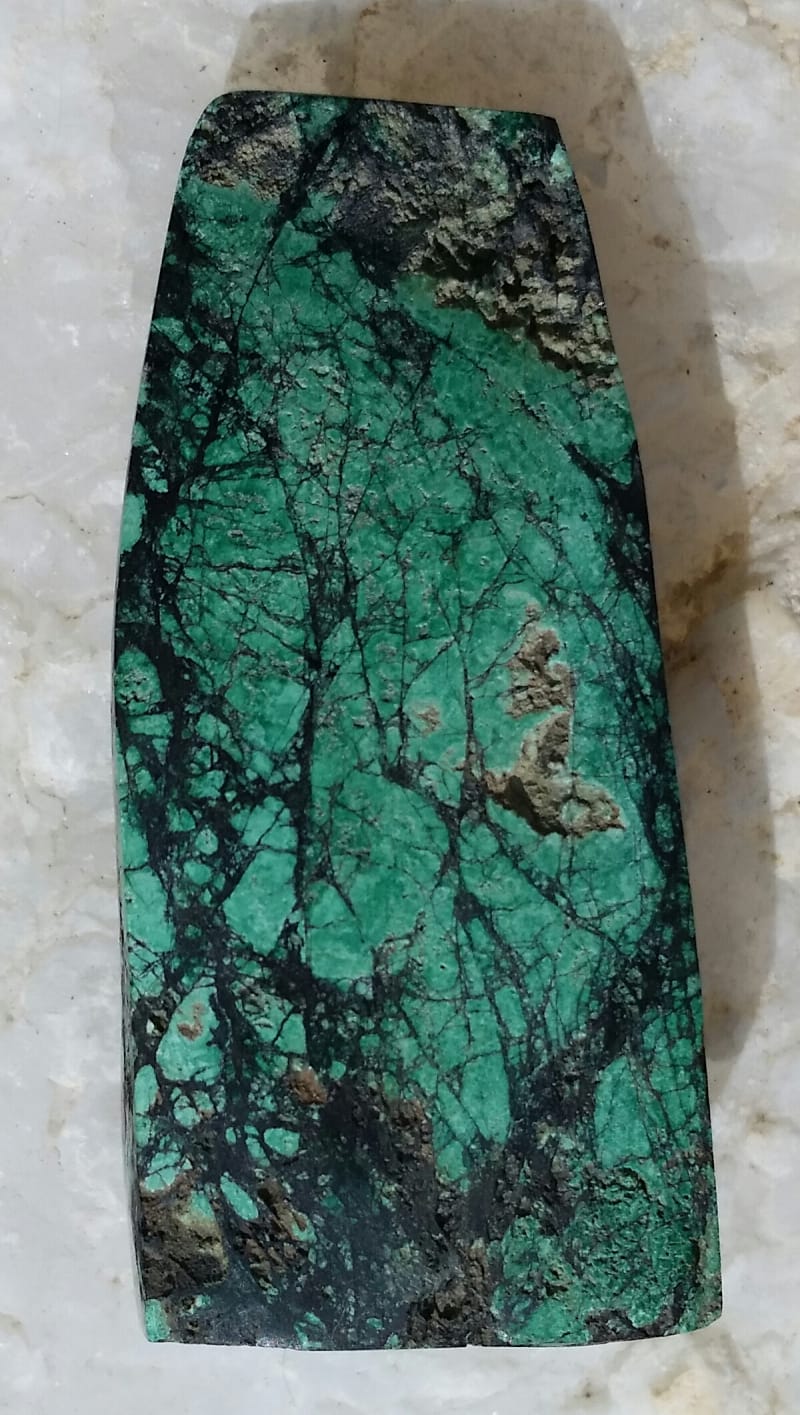 |
|
|
|
Post by liveoak on Feb 13, 2023 10:42:59 GMT -5
A number of years ago I purchased a lot of chrysocolla from a guy in AZ that was mining it.
Interesting, as so many different colors in this same batch
We slabbed some of the other day & one of the pieces had this beautiful spiderweb veins.
This particular one is quite soft and so I stabilized it.
Patty
|
|
|
|
Post by vegasjames on Feb 13, 2023 22:45:46 GMT -5
This was one of my favorite pieces from here in Southern Nevada. It was about 4 inches long until a lady wanted to see what it would look like a bracelet. She put it on her wrist and it slipped off and fell on a tile floor breaking in to multiple pieces. 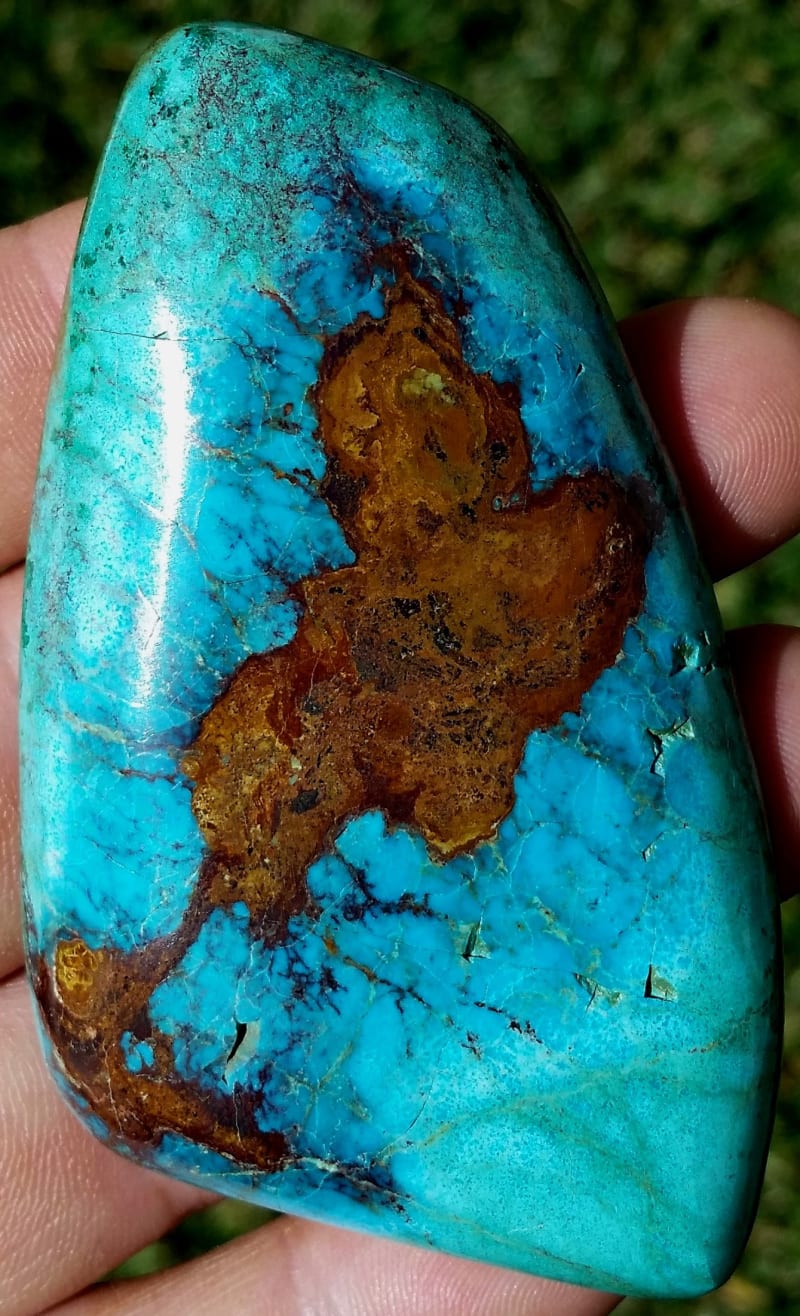 |
|
|
|
Post by mohs on Feb 14, 2023 10:19:56 GMT -5
Happy Valentines 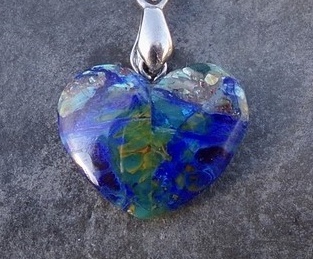 from the BlueBird Mine |
|
gemfeller
Cave Dweller 
Member since June 2011
Posts: 4,059 
|
Post by gemfeller on Feb 15, 2023 2:37:29 GMT -5
The differentiation between turquo0ise, phosphosiderite, variscite, chrsocolla, and various other gemstones in the phosphate/copper series requires laboratory analysis. It's not a "sight" ID. Some of the so-called Hubei "turquoise" from China looks identical to Nevada variscite/phosphosiderite. Some American stones identified as Turquoise seem to me to need lab ID. Here's one I love and have puzzled over for a long time and can't ID opmpletely other than the chrysocolla component. Those copper minerals love to "mix it up." This stone is hard, close to quartz. It took a brilliant polish at 8K. 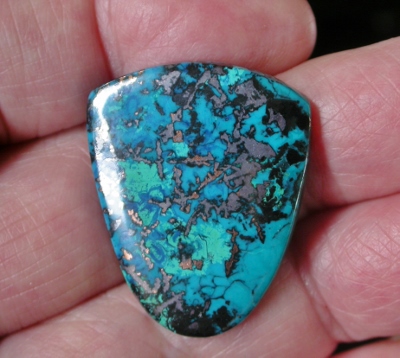 |
|
|
|
Post by vegasjames on Feb 15, 2023 9:57:39 GMT -5
The differentiation between turquo0ise, phosphosiderite, variscite, chrsocolla, and various other gemstones in the phosphate/copper series requires laboratory analysis. It's not a "sight" ID. Some of the so-called Hubei "turquoise" from China looks identical to Nevada variscite/phosphosiderite. Some American stones identified as Turquoise seem to me to need lab ID. Here's one I love and have puzzled over for a long time and can't ID opmpletely other than the chrysocolla component. Those copper minerals love to "mix it up." This stone is hard, close to quartz. It took a brilliant polish at 8K. ![]() rockshow.rocktumblinghobby.com/upload/2020/05/30/20200530164554-583ef5c3.jpg[/img rockshow.rocktumblinghobby.com/upload/2020/05/30/20200530164554-583ef5c3.jpg[/imgWon't let me see the pic unless I turn off my ad blocker.
True though that a lot of the minerals are hard to ID by site. Variscite you can use a chelsea filter for though to determine if it has chromium.
|
|
|
|
Post by vegasjames on Feb 15, 2023 9:58:51 GMT -5
Love this stuff, but so hard to find. 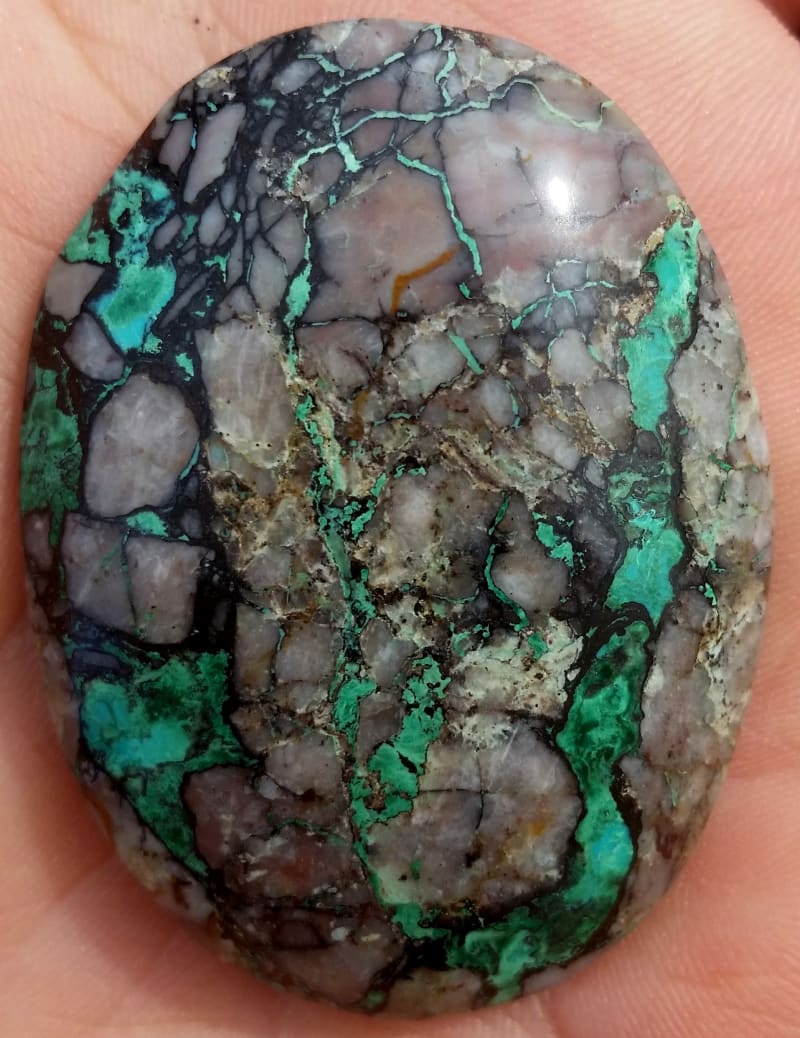 |
|
|
|
Post by rockjunquie on Feb 15, 2023 10:29:40 GMT -5
Some stuff I dug out of a mine here in Southern Nevada a few years ago. Unfortunately, this mine and another mine I used to find turquoise at have been taken over by gun ranges. This is naturally hard and none of this has been stabilized and does not need to be.    Not enough likes for this!!!!! WOW!!!!!!! You have some SWEET material and to think you and Jax hounded it all yourself. Good deal! |
|
|
|
Post by liveoak on Feb 15, 2023 16:56:11 GMT -5
I think it's almost becomes overwhelming vegasjames , looking at all the different flavors & colors of turquoise you have. Really over the top, when as Tela mentioned, that you've hounded it all - thanks for showing it & naming them.
Patty
|
|
|
|
Post by rockjunquie on Feb 15, 2023 18:00:59 GMT -5
Do you happen to have a larger version of this? I downloaded it for reference, but it's a little small. If you do, you can PM it to me, if you want to. |
|
|
|
Post by vegasjames on Feb 16, 2023 3:33:05 GMT -5
|
|
|
|
Post by vegasjames on Feb 16, 2023 19:15:24 GMT -5
|
|
|
|
Post by hummingbirdstones on Feb 16, 2023 19:37:05 GMT -5
Dang, vegasjames, you have an enormous amount of beautiful material!  |
|
lookout
off to a rocking start

Member since October 2024
Posts: 4
|
Post by lookout on Oct 18, 2024 7:58:43 GMT -5
  My dad’s collection, likely collected in Eastern Arizona. I’d appreciate thoughts on how you all decide which is which: specimens, usable for lapidary, find a home, add to the landscaping. I’m sure that there is wide variation in opinions but as the person with crates of rocks I inherited, I’d like to be a good steward. I’m gauging my descendant’s interest and some grandchildren might be interested. All ideas on cleaning, storing, and labelling are welcome! Right now I’m using soap and vinegar and a brush then putting them in sturdy cardboard boxes. Except for the many that are sitting around in the house for me to enjoy! |
|
|
|
Post by vegasjames on Oct 18, 2024 14:31:59 GMT -5
  My dad’s collection, likely collected in Eastern Arizona. I’d appreciate thoughts on how you all decide which is which: specimens, usable for lapidary, find a home, add to the landscaping. I’m sure that there is wide variation in opinions but as the person with crates of rocks I inherited, I’d like to be a good steward. I’m gauging my descendant’s interest and some grandchildren might be interested. All ideas on cleaning, storing, and labelling are welcome! Right now I’m using soap and vinegar and a brush then putting them in sturdy cardboard boxes. Except for the many that are sitting around in the house for me to enjoy! Trying to determine which ones to use for lapidary can sometimes be difficult since we cannot see what is really inside. I have had a lot of rocks that looked like crap on the outside and incredible on the inside and vice vera.
With copper ores, I look closely at the cleaned stone all around and try to determine if the color is superficial, or if the color goes through the stone. If the color goes through, then U cut the stone. If the color is superficial but looks like there may be some color inside, then I tumble the stones for a few days with just water. This removes the softer matrix, which around here is usually primarily dolomite (calcium magnesium carbonate). This makes it easier to determine if it is usable or not.
|
|